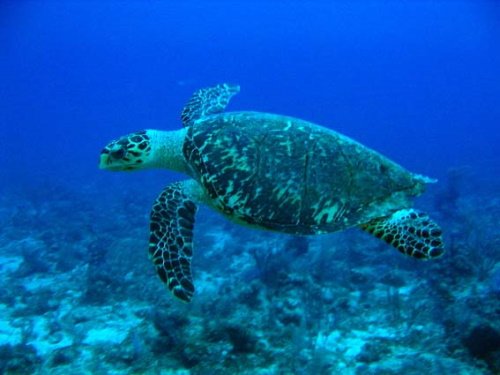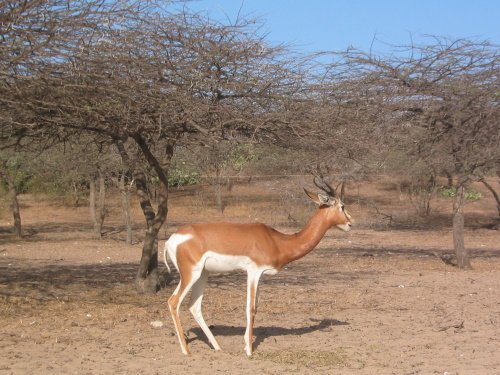I like reading
mammal-watching
trip reports and even sometimes the birding reports at
Cloudbirders
, although for the latter I still fail to see the fun in just going somewhere and ticking off large numbers of 'subjects' in one morning. Via one of those reports, I discovered that the iconic
Mountain Gorilla
isn’t critically endangered anymore. That made me have a second look at our connection
Critically endangered fauna species
, which hadn’t been updated much since 2010. I now did so, using the latest data from IUCN which can be found on their
‘Red List’ website
.

Positive changes
A critically endangered species according to IUCN is “facing an extremely high risk of extinction in the wild”. It is the highest at-risk status, just prior to “Extinct in the wild” and “Extinct”. 3,714 fauna species are currently on that list.
It turned out that a lot of species that we had in our connection are not critically endangered anymore. They include the Leatherback Sea Turtle, which can be found in Malpelo, Rio Platano, Guanacaste Sian Kaan, etc. The fates of the Blue Crane, Black-bearded Saki, Cone-billed Tanager, Mediterranean monk seal, Iberian Lynx, Kittlitz’s Murrelet, Pygmy Hog, Bonin Flying Fox, Hawaiian Monk Seal, Dryas monkey, and Srilankan Rose butterfly all have improved over the past decade and have been removed from the connection.
Sometimes a subspecies is critically endangered, while the species it belongs to is not. Or the other way around. That is actually what happened to the Mountain gorilla: it was 'promoted' to the status of endangered, but the species Eastern gorilla still is critically endangered because the other subspecies (Eastern lowland gorilla) is too. I decided to leave subspecies where the species isn't critically endangered out of the connection to keep the consistency.

New species
My observation is that the AB evaluation usually names a few, but not all, of the species, and then these are reiterated many times in all later IUCN sources (such as the IUCN Outlook). So, I did some searches the other way around – which species are Critically Endangered, and are they found in any of the WHS? Most of the species are located in very small distribution areas. I didn’t check all 3,000+ of them, I mostly did so based on their names. So, the
Darien Stubfoot Toad
must live in
Darien NP
and the
Aldabra Banded Snail
on
Aldabra Atoll
(and they do!).
I added the
Great Hammerhead
(which occurs in
Shark Bay
, but there must be more). And the wonderful
Helmeted Hornbill
, it must still be flying around somewhere in the
Tropical Rainforests of Sumatra
.
The locations to find the
Hawksbill Turtle
have been extended to include the
Great Barrier Reef
,
Sian Ka'an
,
Tubbataha Reefs
, and
El Vizcaino
.
Black rhinos
are also found in
iSimangaliso
,
Selous
,
Mt. Kenya
(and have recently been
evacuated
from
Okavango
). And there are some more sites with
Eastern gorillas
that hold the critically endangered subspecies Eastern lowland gorilla:
Dja
,
Kahuzi-Biega
, and
Ivindo
.
I haven’t been able to find a WHS to match (wild)
Bactrian camel
. Could it be
Uvs Nuur
? The
North Atlantic Right Whale
has a wide range, but the North Atlantic Ocean doesn’t seem to have a suitable coastal / marine WHS:
Ibiza
,
Wadden Sea
, the
West Norwegian Fjords
, and
Ilulissat
are all more coastal than oceanic.

Random Trivia
-
The WHS where you can find the most critically endangered fauna species is:
Rainforests of the Atsinana
(8 species of lemur).
-
Kahuzi-Biega
has the species with the lowest number of known remaining specimens: the
Mt. Kahuzi Climbing Mouse
("This species is only known from two specimens").
-
The
Lord Howe Horn-headed Stick-insect
(
Lord Howe Island
),
New Caledonian Lorikeet
(
Lagoons of New Caledonia
),
Galapagos damsel
(a fish) and
Fernandina Giant Tortoise
(both
Galapagos
) all got an additional indicator:
Possibly extinct
(which is even worse).
Have you ever encountered a critically endangered fauna species at a WHS?



